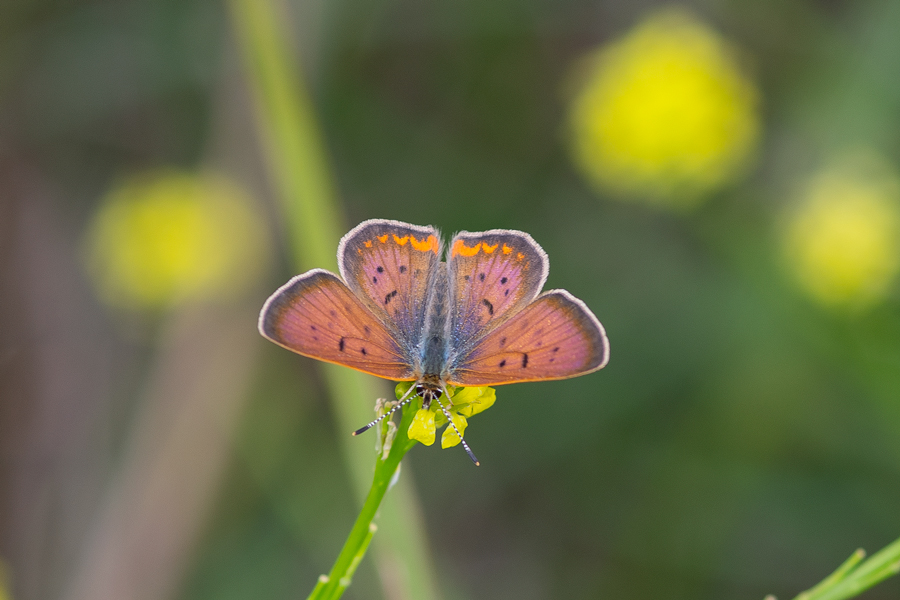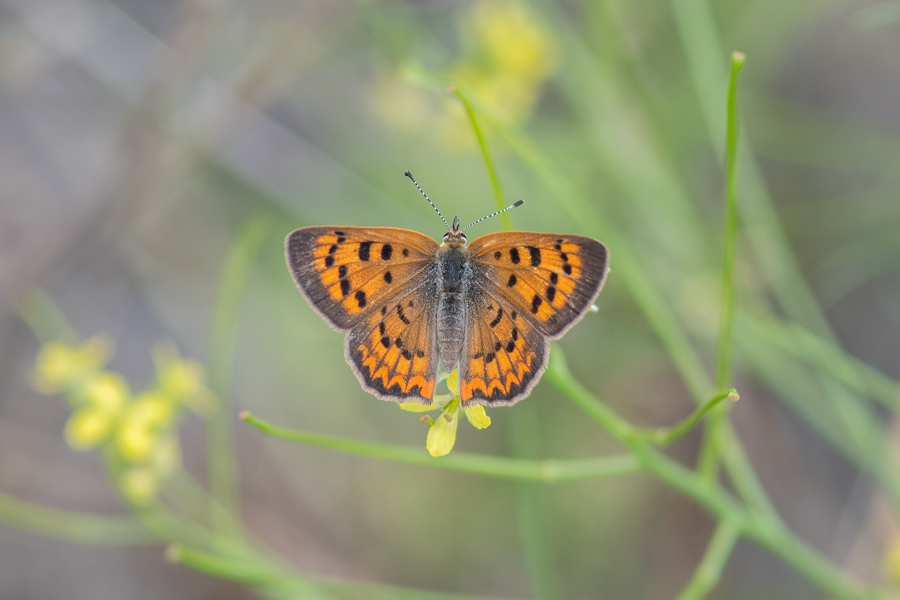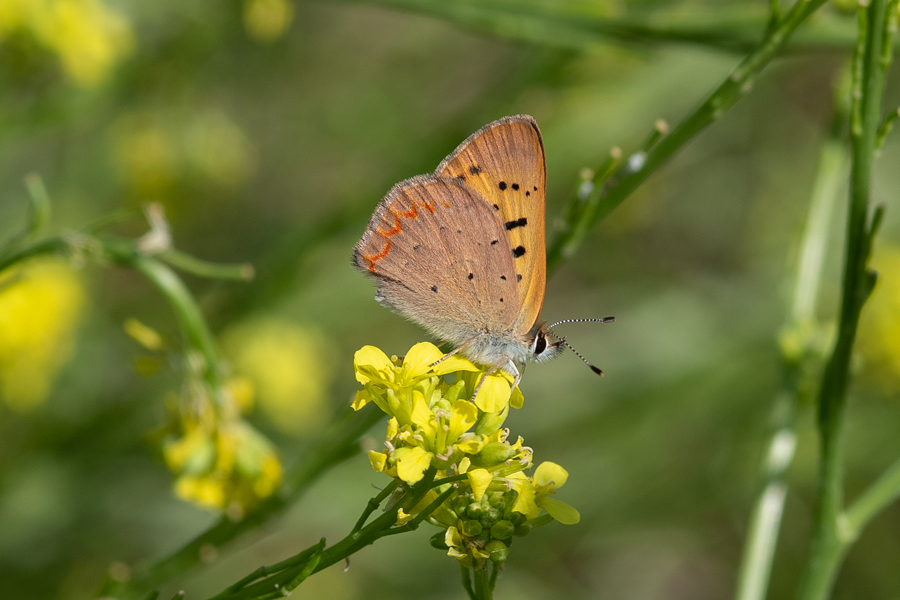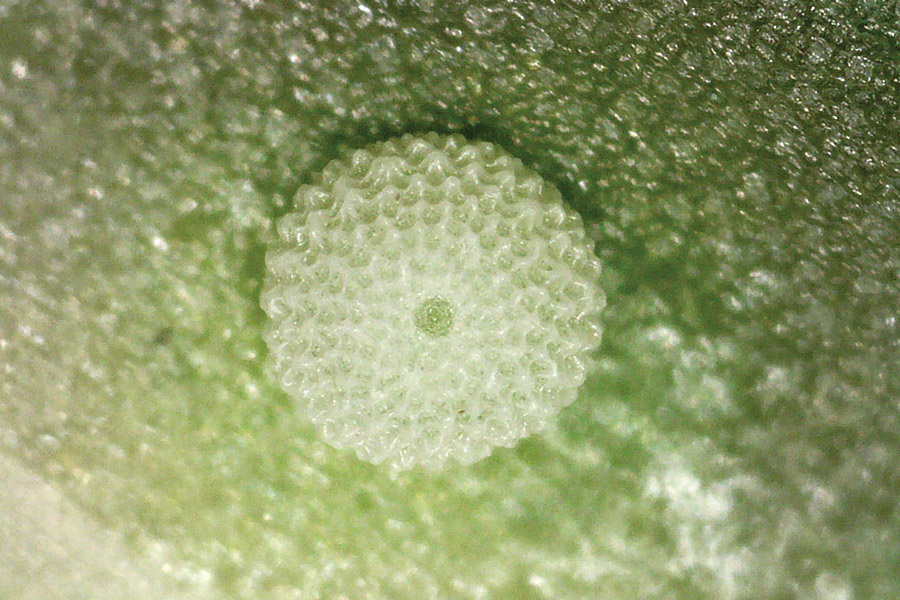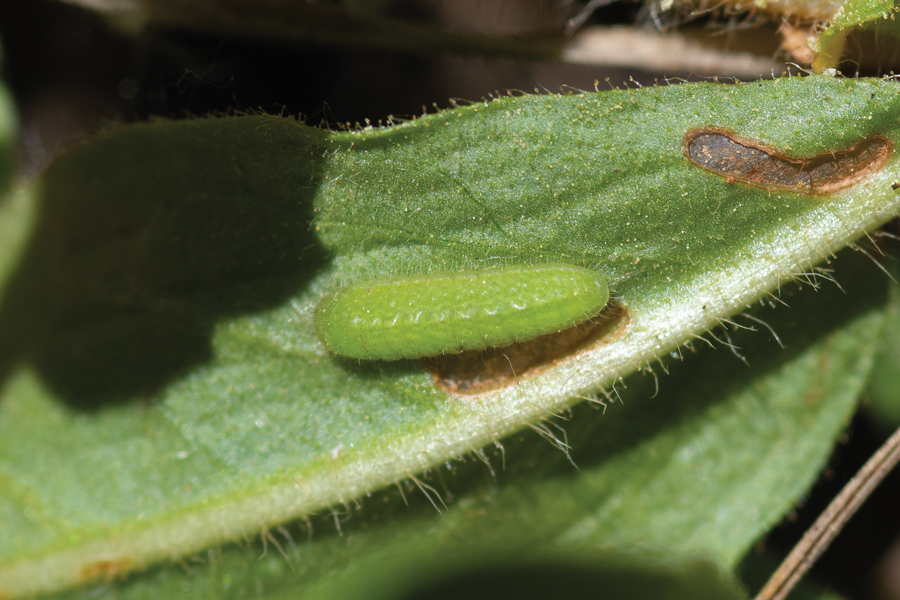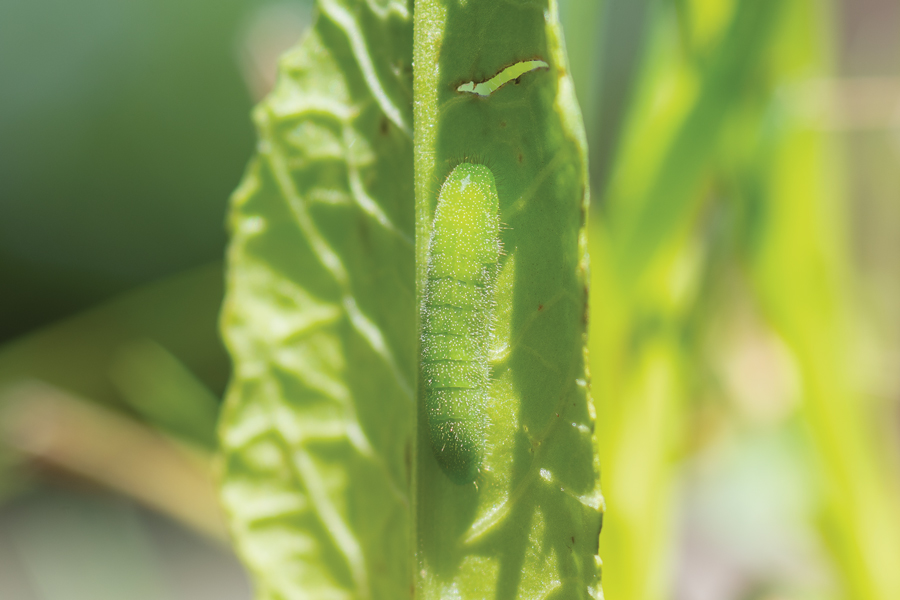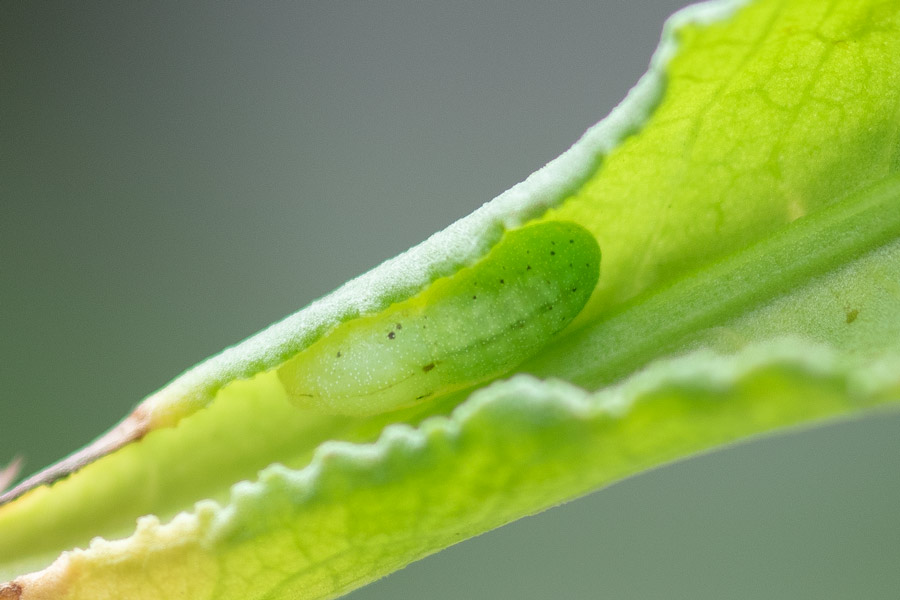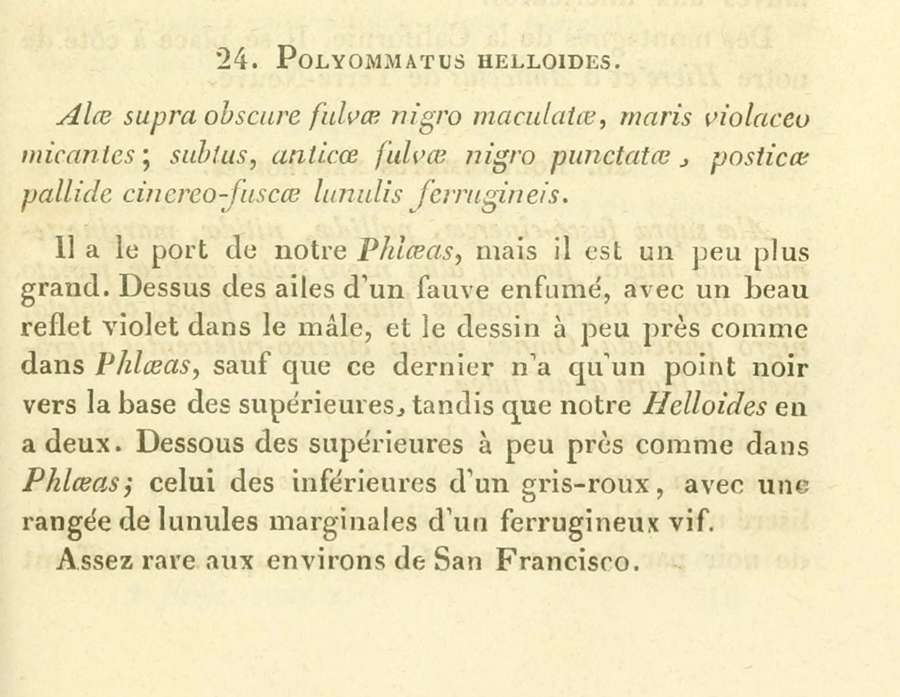Tharsalea (Lycaena) helloides
Purplish Copper
This is a fairly common copper that flies in multiple broods from about April to October depending on location (some high elevation populations may have one summer brood). Hosts include members of the Polygonaceae including species of Rumex such as salicifolius. They also use knotweeds (Polygonum spp. and also common knotweed, Persicaria lapathifolia). At Big Bear Lake, they use water smartweed, Persicaria amphibia. Males and females differ dramatically in dorsal wing coloration, but both are handsome butterflies. A reliable spot for these for me has been Trout Pond Trailhead at Cuyamaca Lake in the late summer/early fall.
This copper and several others were placed in the genus Tharsalea a couple of years ago.
A male purplish copper showing its purplish sheen near Lake Hemet in Riverside County. August 24, 2022.
A female, at the same time and place as the male.
The underside of these is also interesting. All of these were taking nectar for hours at mustard flowers.
I found this egg on Rumex salicifolius near Lake Hemet on September 8th, 2023.
Probably a third instar larva, found on Persicaria amphibia at Big Bear on July 18th, 2023. Note the feeding damage: the early instars make a "window" in the leaf.
At 16 mm., this one seems ready to pupate. I moved it to Rumex salicifolius and it's done well. Usually changing the food plant is a bad idea. July 25, 2023.
One of my caterpillars pupated on the leaf of the food plant. July 30, 2023. A male emerged approximately ten days later.
The original description by Boisduval in 1852. Lorquin had would have collected helloides in San Francisco in 1850/1851 and sent those specimens to Boisduval in Paris.
©Dennis Walker
